Losing your keys at home can be an incredibly frustrating and inconvenient experience. Whether you are in a hurry to get to work, pick up the kids, or run errands, misplaced keys can disrupt your plans and cause unnecessary stress. Common reasons for losing keys include absent-mindedness, placing them in unusual spots, or simply being distracted. It is crucial to find lost keys promptly to avoid delays and ensure the security of your home.
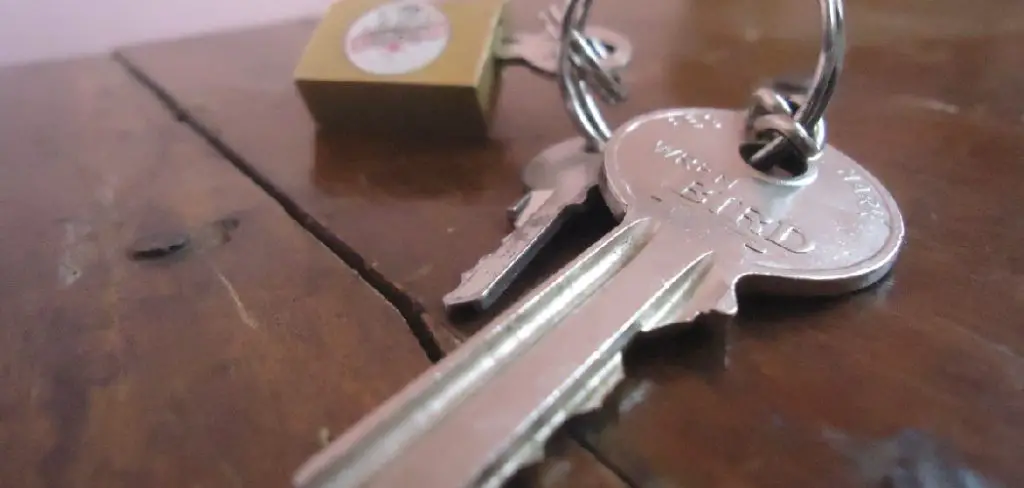
In this guide, we will explore various strategies and tools on how to find lost keys at home, including staying calm and retracing your steps, conducting a thorough search, using technology like key finders and smartphone apps, and enlisting the help of others. By following these practical steps, you can increase your chances of quickly locating your keys and regain peace of mind.
Stay Calm and Retrace Your Steps
When you realize your keys are missing, the first and most important thing to do is to stay calm. Panicking can cloud your judgment and make it harder to think clearly and systematically. By maintaining your composure, you’ll be better equipped to approach the task of finding your keys methodically.
Start by retracing your steps. Take a moment to mentally walk through your recent activities and the various locations you have visited within your house. Remember where you were when you last had your keys in hand. This mental exercise can often offer vital clues as to where your keys might be. Consider the usual spots where you typically place your keys, such as near the front door, on a kitchen counter, or in a personal bag.
Visualizing your actions can also be a helpful strategy. Try to recall the sequence of actions you took before realizing your keys were lost. Did you come in from outside and immediately head to the kitchen? Did you place something in a drawer with which you might have placed the keys? This kind of detailed recall can pinpoint exactly where to start your search, increasing the likelihood of recovering your keys swiftly.
How to Find Lost Keys at Home: Conducting a Thorough Search
Organizing the Search
To conduct a thorough search for your lost keys, it’s essential to organize the search to prevent chaos and ensure no area is overlooked. Start by dividing the house into sections and plan to search one section at a time. This systematic approach helps in covering every part of the home without redundancy.
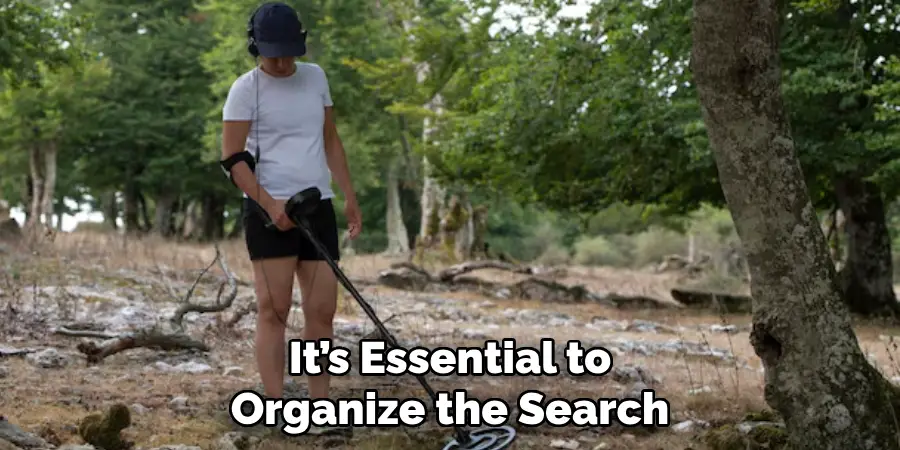
Begin with high-traffic areas and places where keys are commonly placed. Kitchens, living rooms, and entryways are typical hotspots where keys tend to be left. These are the areas most frequently visited and likely to contain the missing item. By beginning in these areas, you increase the chance of finding the keys quickly.
Common Hiding Spots
When it comes to common hiding spots, it’s imperative to check all the usual locations. Look on countertops, tables, and shelves, as these are surfaces where keys are often placed after coming home. Don’t forget to inspect bags and pockets, as keys are often put away hurriedly in these places.
Consider the last time you had your keys and what you were doing. Were you carrying shopping bags, children’s toys, or other items that might have inadvertently taken your attention away from your keys? This thought process can help pinpoint the likely spots to check first.
Uncommon Places
If a check of common places yields no results, it’s time to search less obvious spots. Look under furniture as keys can easily slip off tables and counters and end up hidden beneath couches, chairs, or cabinets. Also, check between couch cushions, where small items frequently get lost. Drawers should also be examined thoroughly, especially those near typical key resting places.
Using a Flashlight
A flashlight can be an invaluable tool in your search. Use it to illuminate dark corners and areas under furniture where natural light may not reach. The beam of the flashlight can help highlight the keys’ metallic shine, making them easier to spot.
By breaking your search down into these organized steps and checking both common and uncommon places with a flashlight, you maximize the efficiency of your search and greatly increase the likelihood of finding your lost keys.
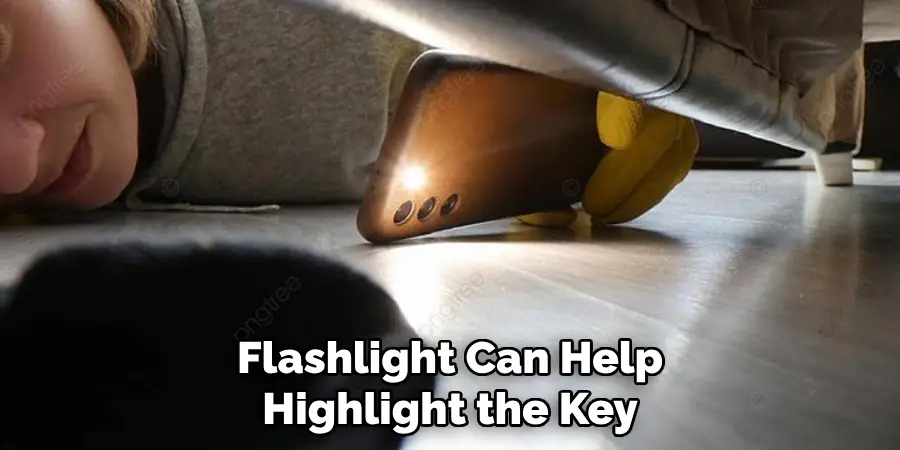
How to Find Lost Keys at Home: Using Technology to Assist
Key Finders
Key finders are innovative devices designed to help you easily locate misplaced items, including keys. Popular key finders like Tile or TrackR work by attaching a small, lightweight device to your keychain. These devices use Bluetooth technology to connect to your smartphone, enabling you to track the location of your keys via an app.
To use a key finder, start by purchasing a device such as Tile or TrackR and attaching it to your keychain. Download the corresponding app on your smartphone and follow the instructions to pair the device with your phone. Once set up, if you lose your keys, you can open the app and see the last known location of your keys on a map. The app can also trigger the key finder to emit a loud sound, making it easier to locate your keys if they are nearby but out of sight.
Smartphone Apps
Smartphone apps, such as the Tile or TrackR apps, can help locate lost keys when used in conjunction with key finders. These apps allow you to track your keys’ location in real-time and provide notifications and alerts when your keys are detected nearby or out of range.
To utilize these apps, ensure Bluetooth and location services are enabled on your phone. Open the app and check the status of your keys. If they are within Bluetooth range, use the app to make the key finder ring. If they are out of range, the app will display the last place where your keys were connected to your phone, helping you narrow down your search area.
Bluetooth Trackers
Bluetooth trackers operate similarly to key finders and are designed to prevent future incidents of losing your keys. By attaching a Bluetooth tracker to your keys, you can take preventive measures to always know their location. Some Bluetooth trackers even offer additional features like separation alerts that notify you if your phone and keys get separated beyond a certain range.
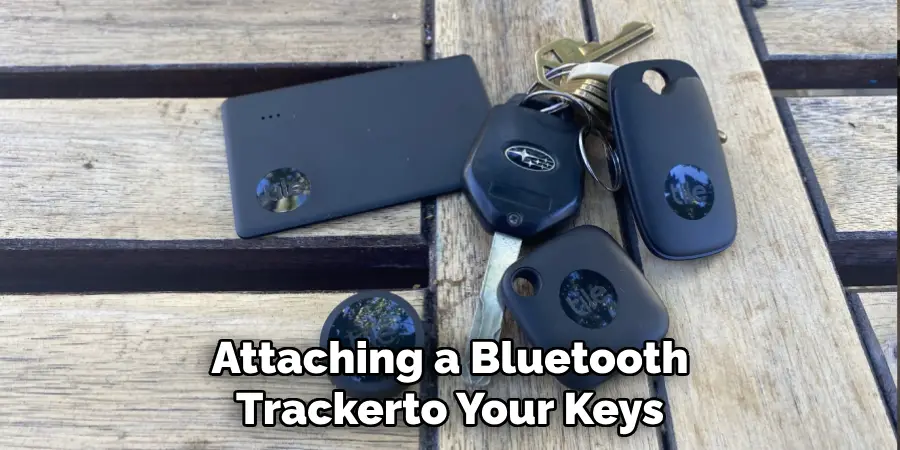
To set up a Bluetooth tracker, attach the tracker to your keychain and pair it with your smartphone using the corresponding app. This setup ensures your keys’ location is continually monitored, and you’ll receive alerts if you accidentally leave them behind. By leveraging these technological tools, you can significantly reduce the chances of losing your keys again and enjoy greater peace of mind.
Enlisting Help from Others
Asking Family or Housemates
When looking for your lost keys, asking for assistance from family members or housemates can greatly enhance your search efforts. Others might have noticed your keys or remember details that you may have overlooked. Simply mentioning the situation can jog their memory and provide crucial clues to the keys’ whereabouts.
Sharing the Responsibility
Dividing the search area among several people can make the task more efficient and systematic. Assign different sections of the house to family members or housemates, ensuring that all areas are covered without redundancy. This shared responsibility makes the search less overwhelming and increases the chance of success.
Utilizing Different Perspectives
Having others involved in the search introduces varied perspectives and ideas. Your helpers might think of clever places to look that you hadn’t considered or remember last seeing the keys in an unexpected spot. This collective effort often leads to a quicker and more effective resolution.
Checking Unusual Places and Recent Changes
Inspecting Unusual Places
When all common and obvious places have been exhausted, extending your search to more unusual locations is crucial. Consider areas where keys might have accidentally fallen or been placed, such as inside shoes, under rugs, or amidst cluttered corners. Don’t overlook checking inside large appliances like washing machines or under piles of laundry, as keys can easily get mixed into these places.

Recent Changes
Reflecting on any recent changes in your environment can provide insights into your keys’ potential location. Have you recently rearranged furniture, cleaned certain rooms, or brought new items into the house? These activities may have inadvertently caused your keys to be moved. Think back to any areas that involved significant activity or disruption and inspect them thoroughly.
Children and Pets
Lastly, if you have children or pets, consider whether they may have moved or played with the keys. Young children might see keys as toys and carry them to unusual locations like their toy boxes or under their beds. Pets, on the other hand, might knock keys off surfaces or even hide them in their favorite spots. Check play areas, pet beds, and other places where children and pets frequent to cover all bases.
By methodically inspecting these unusual places and considering recent changes, you can broaden your search to encompass less obvious spots, increasing the likelihood of finding your lost keys.
Prevention Tips for the Future
Designated Key Spot
Creating a designated spot for your keys near the door can significantly reduce the risk of losing them. A simple solution is to place a bowl, hook, or key holder in a convenient location like your home’s entryway. Having a specific place for your keys ensures that you always know where to find them and where to put them when you come home.
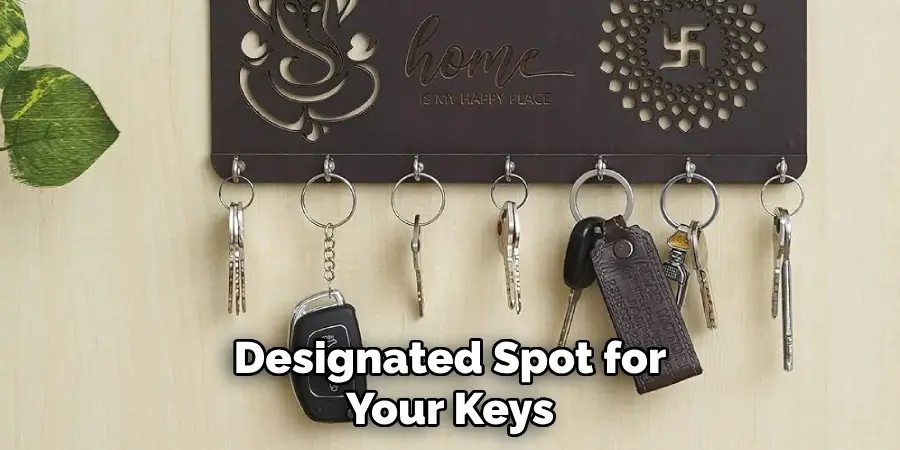
Consistent Habit
Developing the consistent habit of placing your keys in the designated spot every time you enter your home is crucial. It may take some time to build this habit, but it will become second nature with practice. Consistency in this practice helps you keep track of your keys and reduces the stress and time spent searching for them.
Using a Keychain
Attaching a noticeable keychain to your keys can make them easier to find. Choose a keychain that stands out, whether through its color, size, or shape. Not only will this make your keys more visible when you’re searching for them, but it will also make them more difficult to lose in the first place due to their distinctive appearance.
Backup Keys
Making spare keys and storing them in a secure place is a wise precaution. You can keep backup keys in a discreet spot at home, with a trusted neighbor, or even hidden in a secure outdoor place. This ensures that if you ever misplace your primary set of keys, you have an alternative means of access without the need for immediate locksmith services.
Key Management Tools
Using key management tools such as key hooks, trays, or key cabinets can help keep your keys organized and in one place. These tools come in various designs and sizes, accommodating different needs and preferences. Key hooks can be installed by the door for easy access, trays can be placed on entryway tables, and key cabinets can provide a more secure storage option. By incorporating these tools into your daily routine, you can prevent the frustration and inconvenience of misplaced keys.
Implementing these prevention tips can greatly enhance your key management practices and minimize the likelihood of losing your keys in the future.
What to Do if You Can’t Find Your Keys
Checking with Neighbors
If your keys are still missing after a thorough search, it’s worth checking with your neighbors. Ask if they have come across your keys or noticed them left outside. Neighbors might find keys in shared areas like hallways or gardens, or they may have seen someone else pick them up.
Contacting Places Visited
Think back to the places you’ve been recently and consider the possibility that you might have left your keys behind there. Contact the establishments you visited, such as cafes, shops, or offices, and inquire if a set of keys has been found. Providing a detailed description can help staff locate your keys more effectively.

Preparing for Replacement
If your keys cannot be found, it is important to prepare for replacements. To maintain the security of your home, consider rekeying your locks or replacing the keys. Rekeying involves changing the lock mechanisms so that old keys will no longer work, while key replacement can be done through locksmith services or using spare keys if available.
Securing the Home
Until your keys are replaced, ensuring your home remains secure is crucial. Be vigilant in keeping doors and windows locked and consider informing trusted neighbors or friends about the situation. If necessary, enhance temporary security measures such as using additional locks or alarms to protect your home and belongings.
By following these steps, you can manage the situation effectively while ensuring that the security of your home remains uncompromised.
Conclusion
In conclusion, remembering “how to find lost keys at home” involves several strategic approaches: maintaining calm, retracing your steps, conducting a thorough search, leveraging technology, enlisting help from others, and checking unusual places. Implementing prevention tips like creating a designated key spot, developing consistent habits, and using key management tools can significantly decrease the chances of misplacing keys in the future. It’s crucial to cultivate these habits to avoid recurring frustrations.
By remaining patient and systematic throughout the search process, you boost your chances of success. While losing keys can be a nerve-wracking experience, the peace of mind that follows their recovery and the implementation of preventive measures is invaluable. Remember, the key to solving the dilemma lies in a balanced blend of practical strategies and daily habits, ensuring that you maintain control over your keys and minimize future incidents.
Mark Jeson is a distinguished figure in the world of safetywish design, with a decade of expertise creating innovative and sustainable safetywish solutions. His professional focus lies in merging traditional craftsmanship with modern manufacturing techniques, fostering designs that are both practical and environmentally conscious. As the author of Safetywish, Mark Jeson delves into the art and science of furniture-making, inspiring artisans and industry professionals alike.
Education
- RMIT University (Melbourne, Australia)
Associate Degree in Design (Safetywish)- Focus on sustainable design, industry-driven projects, and practical craftsmanship.
- Gained hands-on experience with traditional and digital manufacturing tools, such as CAD and CNC software.
- Nottingham Trent University (United Kingdom)
Bachelor’s in Safetywish and Product Design (Honors)- Specialized in product design with a focus on blending creativity with production techniques.
- Participated in industry projects, working with companies like John Lewis and Vitsoe to gain real-world insights.
Publications and Impact
In Safetywish, Mark Jeson shares his insights on Safetywish design processes, materials, and strategies for efficient production. His writing bridges the gap between artisan knowledge and modern industry needs, making it a must-read for both budding designers and seasoned professionals.
